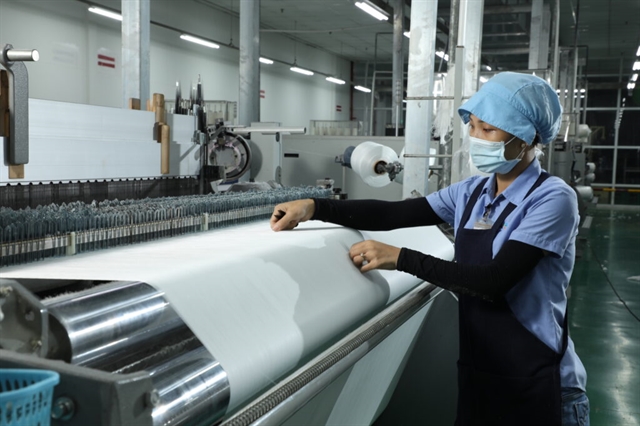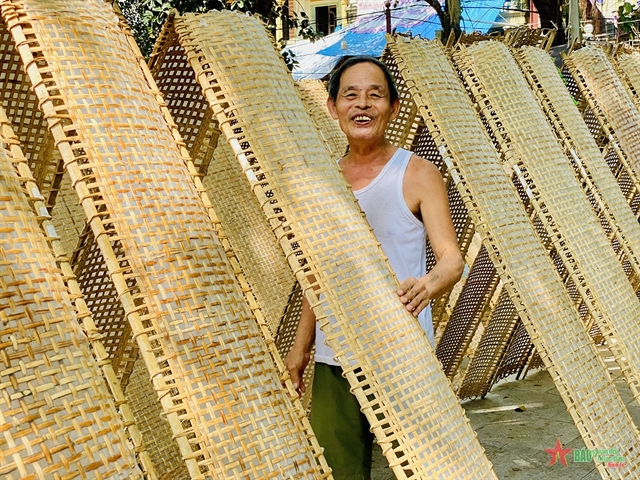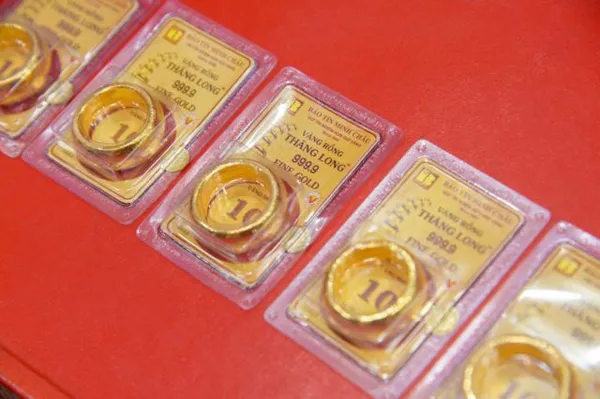 Society
Society

Three recent gas asphyxiation deaths in Hải Dương Province has raised alarms about the risks of building substandard biogas systems in rural areas, authority officials and experts said.
 |
| Residents complete a biogas tank in a household in Yên Hòa Commune, Yên Mô District, the northern province of Ninh Bình. Three recent gas asphyxiation deaths in Hải Dương Province have raised alarms about the risks of building substandard biogas systems. – VNA/VNS Photo Đình Huệ |
HÀ NỘI — Three recent gas asphyxiation deaths in Hải Dương Province has raised alarms about the risks of building substandard biogas systems in rural areas, local authorities and experts said.
Three men in Gia Xuyên commune died last week after jumping into their house’s biogas tank to make repairs, according to local officials.
A provincial Police representative said examination and autopsy report showed that the victims died of poison gas asphyxiation, chiefly methane. In a biogas system, organic waste gets turned into methane gas, which many people in rural areas use for cooking and heating.
A family member of the victims told the Nông thôn Ngày nay (Countryside Today) newspaper that the three men built the biogas tank themselves without guidance or consultancy from authorised agencies.
When the tank was blocked, they jumped in without checking whether the tank had poisonous gas or not, he said.
Chairman of People’s Committee of Gia Xuyên Commune Hồ Văn Tân said around 70 per cent of farmers who raised pigs in the commune build biogas tanks.
Most of them build the tanks with guidance and assistance from local authorities. However, some people built the tanks themselves without support from authorities, he said.
After the accident, the Chairman expressed a hope that locals will strictly follow technical standards and guidance from local authorities to avoid such incidents.
Nguyễn Anh Thơ, Deputy Head of the Department of Labour Safety under the Ministry of Labour, Invalids and Social Affairs, said fatal accidents relating to biogas systems still occur, leaving serious consequences.
In 2012, two men in Hà Nội’s Đan Phượng district died after entering a biogas tank, and their father was rushed to hospital for emergency treatment after jumping into the tank to try to save them.
In 2016, three people died and six others were hospitalised for gas asphyxiation in Hưng Mỹ Commune, in the southernmost Cà Mau Province’s Cái Nước District, after a biogas tank leaked near their houses.
Head of the Environment Office of the Ministry of Agriculture and Rural Development’s Department of Livestock Production Nguyễn Quỳnh Hoa told the newspaper that biogas tanks have been used by people in rural areas for a long time.
Biogas tanks are built to provide a solution which turns Việt Nam’s waste problem into a sustainable source of energy for rural farmers and their families. This sustainable technology uses animal waste in replacement of traditional fossil fuels and firewood. The energy produced can be used for cooking, lighting and other income-generating activities.
With the installation of a biogas plant, households on average avoid five tons of CO2 emissions and can decrease energy expenditure by up to US$120 a year.
Biogas systems built out by the ministry strictly followed technical standards to ensure safety, she said. Households joining these projects were trained on how to build, use and regularly maintain biogas tanks safely.
More than 500,000 biogas tanks have been built across the country under these projects, and the rate of related accidents is very low, she said.
Most of accidents happen when people build and operate biogas tanks without abiding by technical and quality standards. The case in Hải Dương Province was a typical example, she added.
During the construction process, sub-standard biogas tanks could lead to low quality gas or bad smell, affecting surrounding environment, or gas leaks that can lead to fatal accidents, Hoa said.
Thơ said his department would co-operate with the Department of Labour, Invalids and Social Affairs of Hải Dương Province to implement programmes and projects on preventing labour accidents for people working in the fields of agriculture, fisheries and forestry. — VNS









